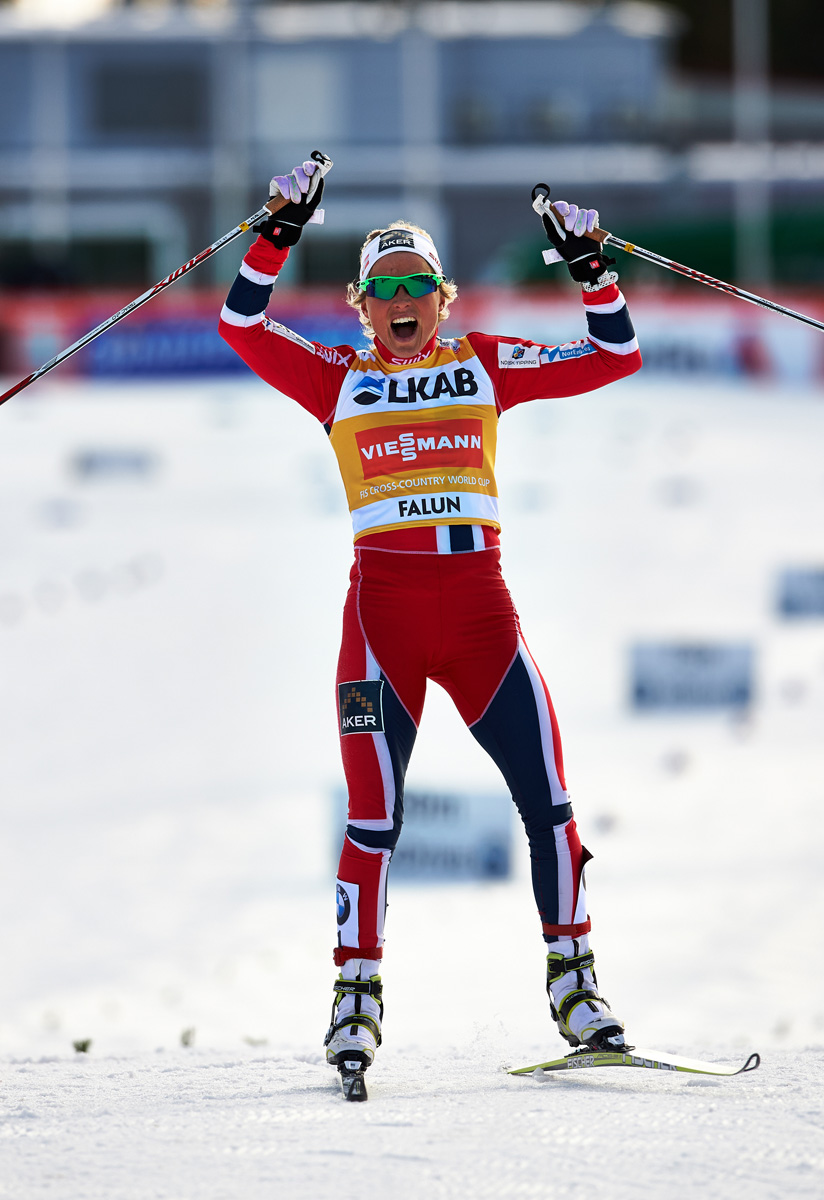
This is the second article in a series on the future of the national-team model as seen in Norway. First we took at look at Petter Northug, Jr., and here we explore Theresa Johaug’s approach to a successful career and how that relates to the Norwegian National Team.
Can the Norwegian Ski Federation (NSF) keep its Norwegian ski stars on its team or will it lose them to big sponsors? That is the question now facing Stein Opsal, the foundation’s secretary general.
Perhaps the most valuable athlete for the NSF is Therese Johaug. Johaug, 25, represents a kind of Norwegian ideal: outwardly sincere and positive, perennially tan from vigorous outdoor exercise, she radiates “true sporting pleasure” as her manager Jørn Ernst describes it.
Johaug won a place in the hearts of Norwegians with her emotional victory in the 30 k skate race at the 2011 World Championships in Oslo, Norway.
“I remember I got the Norwegian flag,” Johaug recalled. “When I crossed the finish line, I thought, ‘Is this real? My God, I’ve won my first international ski race.’ ”
She collapsed into the snow crying ecstatically, and after she had recovered, she broke royal protocol by enthusiastically hugging King Harald. The Norwegian public was charmed, and 120,000 showed up in Oslo’s University Square that evening to watch Johaug receive her gold medal and sing Ja, Vi Elsker, the Norwegian national anthem.

For Johaug, who describes herself as “just a hick from Dalsbygda,” the national attention following the championships was a new experience.
“I think that I have been fortunate to have been allowed to grow up in a village where everyone knows everyone,” she said Johaug of growing up in the rural town during a 2012 interview with Dagbladet. “Sure, it has its drawbacks, too, but to grow up in that environment, in the yard, experience summer vacations on the farm with Mommo … I think that I have never had things put in my hands for me. I have worked and helped at home.”
After the championships, her popularity rocketed, and she was swiftly declared the most-admired athlete in Norway, ousting the previously most admired, the ever-humble biathlete Ole Einer Bjørndalen.
As Johaug described it in 2012, “It’s only now I realize how much that day meant to me. For my career, for [people’s] interest, sponsorship, everything. It was very special in Oslo.”

Johaug’s fame has also come at a price. “I have become a more famous person, too,” Johaug said of the aftermath of the 2011 championships. “It is not only positive. Even if you get a lot of nice feedback, it is not constantly so cool. If I shall go for a walk in town … I wish I was a normal person, instead of that I will be topic of conversation during dinner to people. ‘Yes, I saw Johaug. I saw she did this, and bought that.’ It does not seem so cool.”
Johaug has found that spending time in Oslo can be an uncomfortable scene. “People [are] bumping into each other whispering, ‘Look, it’s her,’” she said. Asked if she was able to spend evenings out in Oslo, Johaug exclaimed, “No, that’s impossible! When people get something in their system they make contact. They dare not otherwise, almost.”
Johaug has reconciled herself to this fame, and embraced her sponsorship potential.
“Of course, when I’ve got the name I’ve got now, with the partners I have, I have a unique opportunity to get myself a position for the future,” said Johaug.
Jacob Lund, a sponsor expert, told Dagbladet in 2012: “She’s going to make more money than both Petter Northug and Marit Bjørgen. The girl has everything, so the sponsors will be willing to pay very much.”
Yet Johaug talks little of business matters to the media, leaving the subject to Jørn Ernst, her manager. After Northug left the Norwegian National Team and signed a private contract with Coop last May, Ernst told NRK that he found the deal “exciting” and would “pay close attention” to Northug’s career choice.
“Therese would have earned big money if she went out of the national team,” he added. “[But] money is the last thing she thinks of.”
Ernst also put concerns to rest that Johaug would leave the national team. “Therese is very clear that it is not the way to go,” he said. “She has no plans to invest alone, and it has never been discussed. Therese thrives very well in the national team. They are a tight group and she needs a good environment to perform. She and Northug are completely different. He is in a unique position. Therese has not been able to focus alone.”
Traditional Sponsorship

Johaug has instead turned to the traditional route of making money as a cross country skier: private sponsorship. To this end she has deals with 12 sponsors, not to mention her own new line of ski gloves named Johaug, of which 120,000 pairs were sold before Christmas of 2013, as well as a private jewelry collection, and property investments.
Her sponsorships includes a deal with Austrian executive-air service Mapjet, worth some 2 million kroner a year, and secured after the company’s CEO became enamored with Johaug after watching her race in the 2011 Oslo World Championships. The CEO even went so far as to insist that she braid her hair for the promotional photos in the same fashion that she had it during the Championships.
She is also a face of Swiss watchmaker Tag-Heuer. This year she turned down an opportunity to open a new Tag-Heuer store on Paris’s Champs Elysees with Leonardo di Caprio and the million-kroner appearance fee that went with it, citing a conflict with her training regimen.
According to Ernst, Johaug turns down opportunities almost every day, from TV shows to jumping out of birthday cakes, in order to concentrate on her ski training. She has famously refused to be sponsored by sports drinks, as she finds them antithetical to her beliefs about healthy living. Ernst gives the impression that Johaug does little more than train and turn down financial offers in order to train even more.
But Johaug is fully aware of her long-term picture, and senses the opportunity to secure her future now. “A cross country skier I am,” she said to Dagbladet, “but I’m the girl next door too. I must say that that gives me a lot, I can really connect. Although cross country is incredibly important to me right now, and I admit that life is falling apart if I do not get the results I want…then cross country just a tiny part of my life in the long run. There are other important values, afterwards.”
There are plenty of opportunities for Johaug, and in turn, the NSF as well. Johaug’s popularity with Norwegians has only boosted the profile of the Norwegian National Team, which has increased its sponsorship funds by 53 million kroner ($8.8 million dollars) over the last five years. ASKO, a Norwegian grocery chain and NSF’s title sponsor, and the mega-food conglomerate Norgesgruppen/Spar, specifically sponsors just two members of the team: Johaug and Marit Bjørgen.
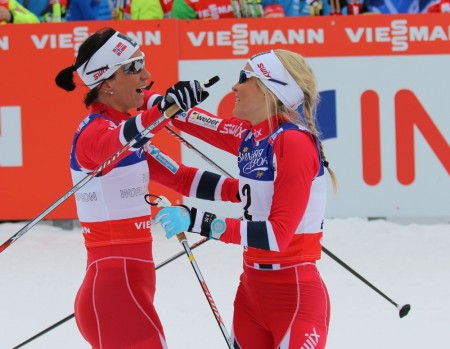
Bjørgen, the queen of the Norwegian ski team and its most successful woman in cross-country skiing history, has been an influential to Johaug. When Johaug has grown discouraged, it has been Bjørgen who has instilled confidence in her, and there is no question that training with the best woman in the world has made Johaug a better skier.
Yet despite Bjørgen being the best skier, by 2012 Johaug earned 1.1 million kroner to Bjørgen’s million. Bjørgen still had the greater net worth, with a fortune of 21.7 million kroner ($3.6 million dollars) to Johaug’s 13.3 million kroner ($2.2 million dollars), but that will likely not last for long.
If Johaug had everything that sponsors wanted in 2012, as Lund had declared, then she certainly has even more now. The 2013/2014 season was exceptional for Johaug: she won the Tour de Ski, captured individual silver and bronze medals at the Sochi Olympics, and was able to fend off Bjørgen for the Overall World Cup title. With the World Cup title to her name, Johaug now has the results to fully reach her income potential. How she chooses to do that will be an important for the future of the NSF.
The Truth Behind Their Income
Yet despite all of her sponsorships, these opportunities do not seem to have made Johaug rich by Northug’s new standards — at least not yet. Johaug’s 2012 income of 1.1 million kroner was less than Northug’s 1.6 million kroner that year, and a far cry from the 10 to 20 million he is reported to make now.
However, those numbers, based on public tax records, don’t tell the whole story. The NSF has set up a private fund for its cross country skiers. Established in 1985, the fund was created to provide skiers financial support after they retired from the national team. The money in the fund remains tax-free for as long as a skier is active on the national team, and allows the profits reaped during bountiful years on the team to be spread out over many years. Therefore, Johaug may well have made more than a million kroner in 2012, but that was only the amount she withdrew from her fund.
According to the Norwegian business newspaper Hegnar, “The funds … can be withdrawn without taxation to cover documented expenses related to sporting activity, such as exercise equipment, travel, hotel stays, consultancy, computer equipment and training in other sports where relevant.”
“Normal people would have dreamed of getting such a deal,” the fund’s chairman Helge Bie, told Hegnar.
This fund shields Norwegian skiers from what would otherwise be a large tax burden. A wealthy athlete like Johaug would usually have to pay somewhere between 37 and 40 percent on their income in Norway, where the income tax rate is a flat 28 percent, with an additional 9 percent on income over 456,000 kroner, and 12 percent over 741,000 kroner.
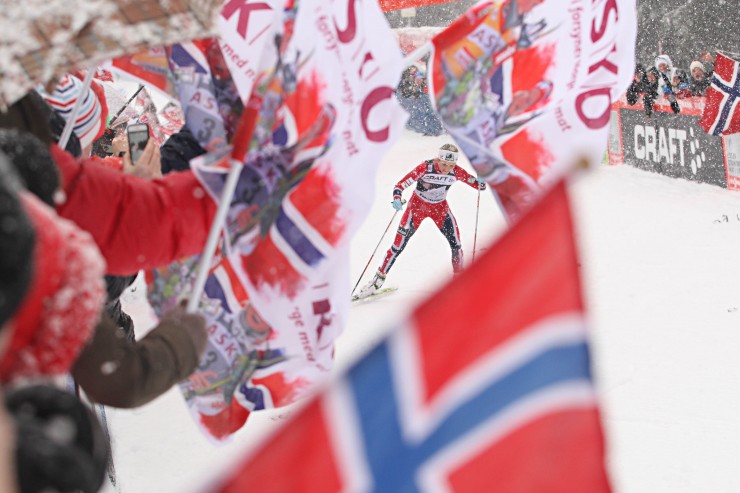
“We can safely say that the fund is a good solution for skiers,” said Bie. “And there is great interest in using it. Those who have good advisors around them, their money is in the fund.”
The fund itself is good indicator of how much new money there is in the sport in Norway. In 2011, the fund was worth 70 million kroner, with 150 members, most of them former skiers who are no longer paying into it. In January 2014, Bie said the fund was around 150 million kroner, despite gaining hardly any new members. This suggests that current NSF athletes deposited some 80 million kroner ($13.3 million) to more than double the fund over the last three years.
Northug’s manager Are Soerum Langås confirmed to Hegnar that “there are a few million in Petter’s fund,” but Johaug’s manager declined to say how much was in her fund. Norwegian business paper Kapital reported in January 2014 that Johaug’s career wealth had grown to 25 million kroner, nearly double from what it had been two years prior.
Five million of that wealth came from her national-team salary, which is likely about 450,000 kroner a year, and the team’s sponsors. Another five million came from prize money and bonuses given for winning medals. The remaining 15 million kroner came from her private sponsors. Not bad for a 25-year-old skier who already owns two homes and wheels around in a BMW X3.
Yet this is only the beginning for Johaug. Dagbladet reported that her renegotiated sponsorship deals may now be worth up to 10 million kroner a year, rivaling Northug’s new income. Johaug’s success in her private sponsorship agreements is also important for the Norwegian National Team, as it seeks to demonstrate its value to skiers. If Johaug surpasses Northug’s Coop deal through the traditional sponsorship route, it will send an important message to other athletes that there are not necessarily any advantages to leaving the team.
The NSF’s doing what it can to ensure that both Johaug and Bjørgen are content on the national team. Perhaps Ernst’s comments about watching the Northug deal closely were a subtle hint to the NSF to not take Johaug for granted. If so they seem to have received the message. The NSF goes to great lengths to keep their star athletes happy, even providing Johaug with a private car and chef during the Tour de Ski. As privately sponsored ski teams are able to new levels of personal support, the NSF will likely have to compete on the type of luxuries it provides its athletes, and pressure the social democracy ethos that has long ruled the national team.
A Juggling Act
Yet just because Johaug is a current member of the national team does not necessarily mean her sponsorship situation is without its drawbacks. Unlike Northug who was able to sign one substantial agreement with a grocery chain, Johaug has many different agreements in place, 13 in fact. This plethora of sponsors can create its own headaches and distractions.
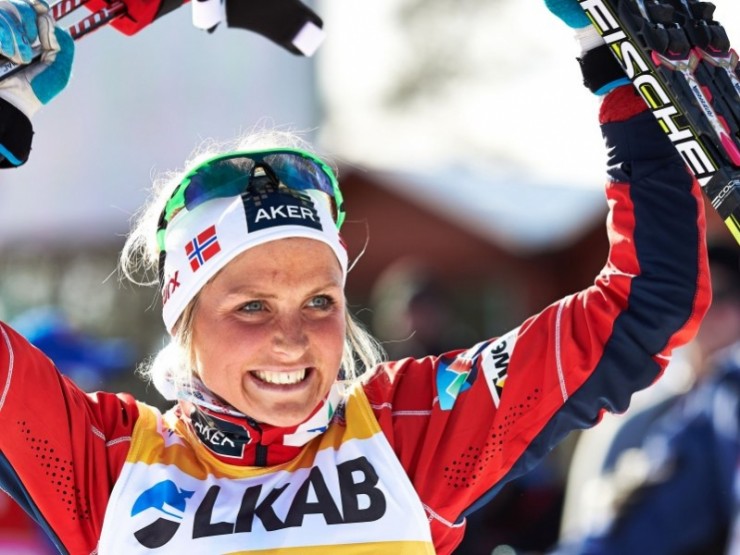
For instance, like Northug, Johaug’s Colgate ads had to be pulled during the Olympics to accommodate exclusivity clauses. As Johaug’s agreements become more expansive in the Norwegian market, she will likely encounter more exclusivity issues even if she carefully chooses them to avoid conflict.
Johaug also brought out the absurdity of product endorsement when she repeatedly drank from her a bottle of Isklar — the water sponsor of the national team— during a post-race interview in December. On closer examination, it appeared that the cap was still on the bottle and Johaug was mocked for the gratuitous product display. The tables at press conferences that Johaug and Bjørgen sit at are often piled high with products that support the national team. The promotion benefits the skiers and the NSF, but it creates a blurry line between a national team and a commercially sponsored ski team.
Then there is the issue of her new ski-gear company, which she is also eager to promote. The venture has attracted 15 million kroner from investors, and Johaug owns the rights to her namesake brand in Norway, Russia, China, the European Union, and the United States.
It’s unknown what the ultimate goal is for the company, but ski gloves is probably just a start. While Johaug has been careful not to overcommit her time to other sponsorship entities, she may find it harder to say no to the business baring her name.
While Ernst and Johaug have worked hard to ensure that her sponsorship obligations don’t interfere with her training, many great skiers over the years have warned that each year brings more distractions and non-skiing-related demands.
“We train insanely much,” Johaug told Dagbladet in March 2012. “Coach Egil [Kristiansen] says that we train more than Ulvang and Dæhlie did at their best.” Whether Johaug, now the defending World Cup champion, can maintain her grueling training regimen and the demands of her financial obligations, remains to be seen.
If Johaug, as the defending World Cup champion should choose to leave the NSF it would be a serious blow not only to the Norwegian National Team, but it would threaten the national team model in the sport. Johaug though, has given no indication that she would make such a move, and as Stein Opsal debates about what do with Northug, he can afford to make a stronger move knowing that his women’s team is fully onboard.
Johaug’s booming commercial success is a shining example that the old, traditional route of national team membership can be as profitable as anything in the private realm of skiing. She represents the young, bright face of the sport, and as long as she chooses to stay with the NSF, she will remain a paragon for what can be achieved on a national team.
***
Stay tuned for the rest of this series when it returns in June; the author is touring Nepal and India in May!
Pasha Kahn
Pasha Kahn writes and coaches in Duluth, Minnesota.


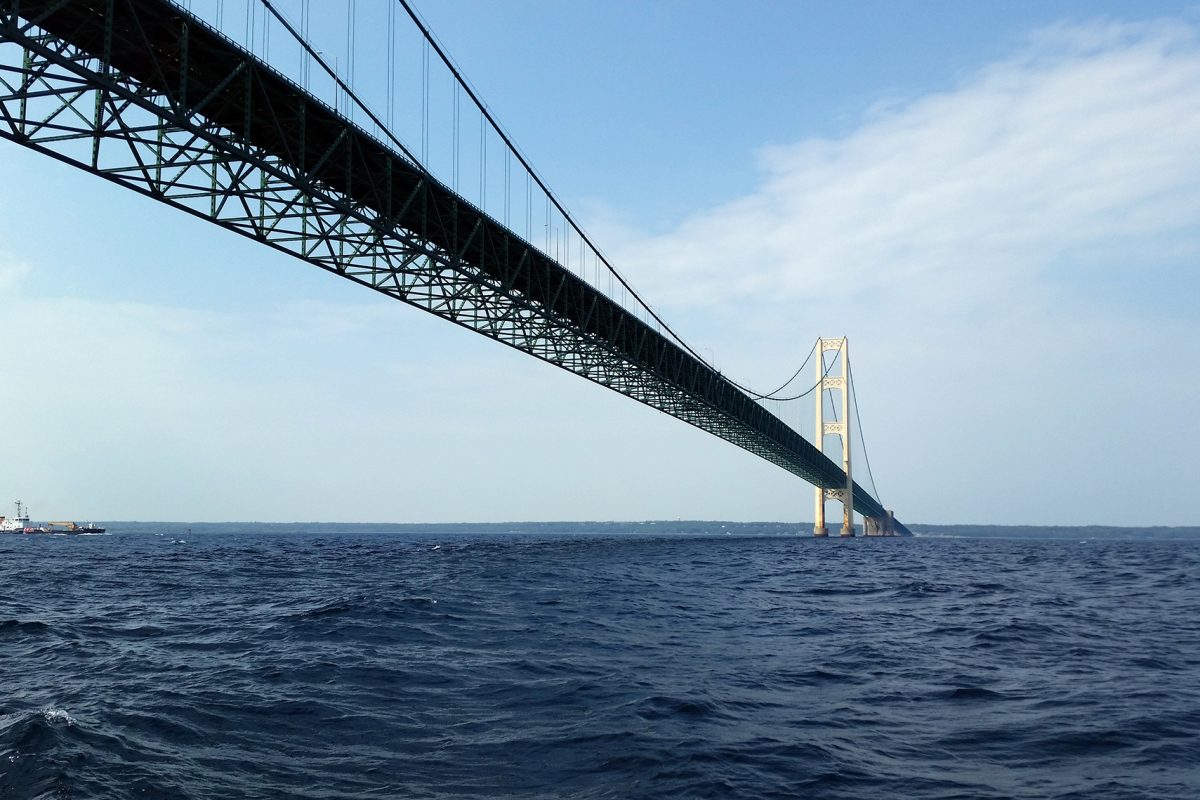

2 comments
Train Wreck
April 11, 2014 at 9:00 pm
Excellent article, and a great series. Very informative and well-written. Thanks for the time and effort.
Martin Hall
April 12, 2014 at 11:04 am
This is known as “pay back”—-the NSF was there supporting you when you weren’t winning—so, now that you are the hero—-be more then happy to be pulling on an oar to keep the NSF solvent in taking care of the next young group!!! Grow your team, sport and the rewards will come!